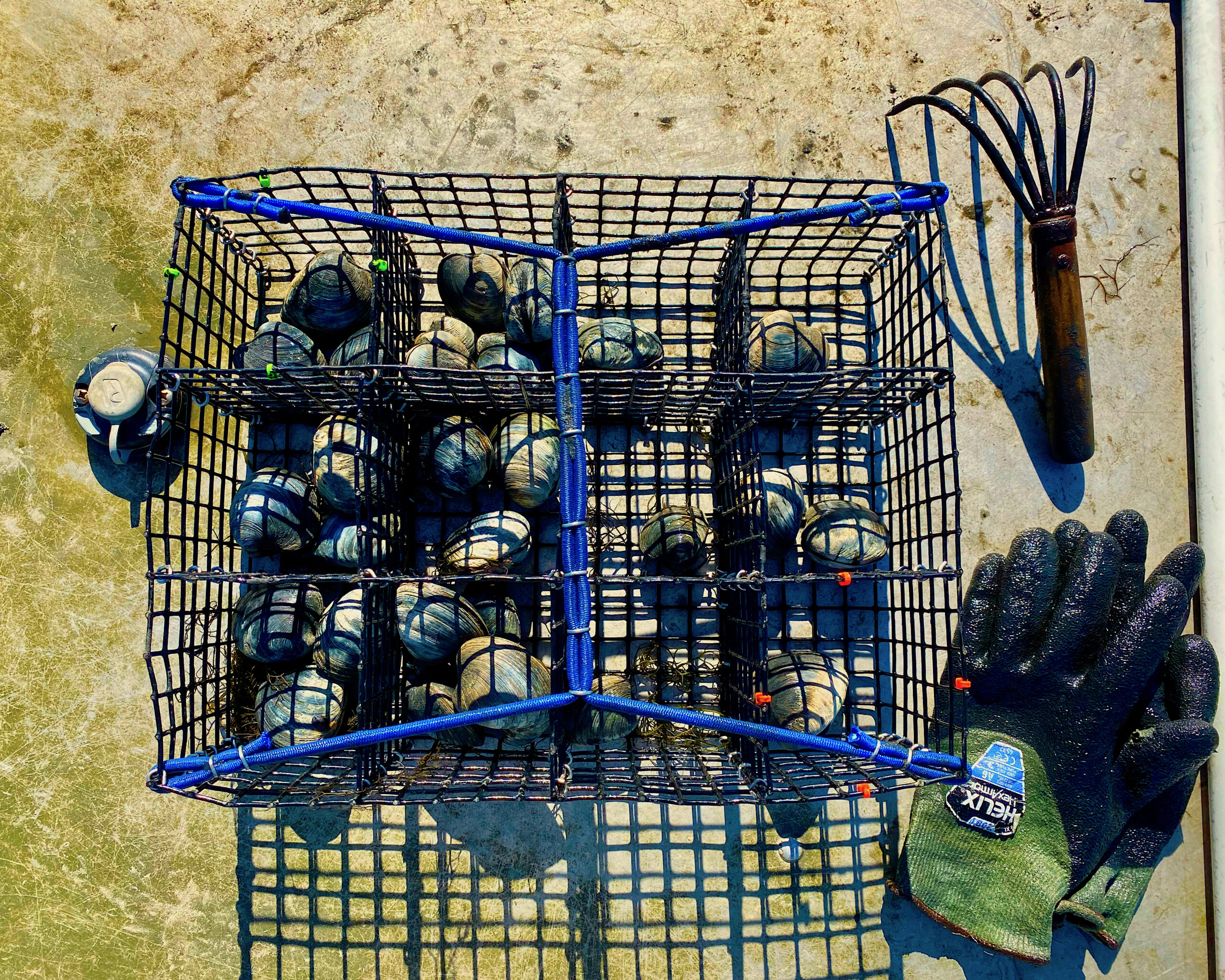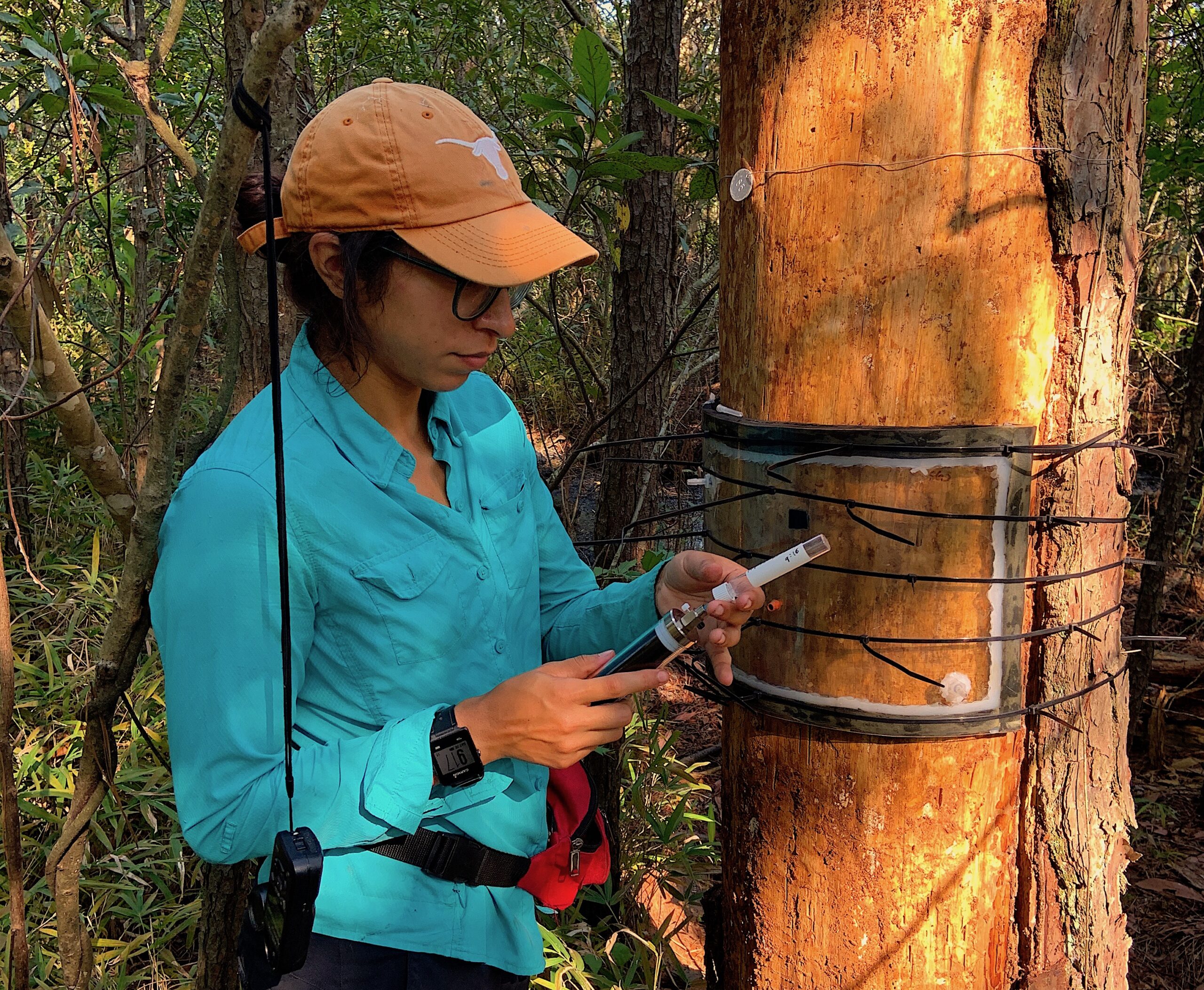This Wet and Water Loving Land
Excerpts from North Carolina: Land of Water, Land of Sky
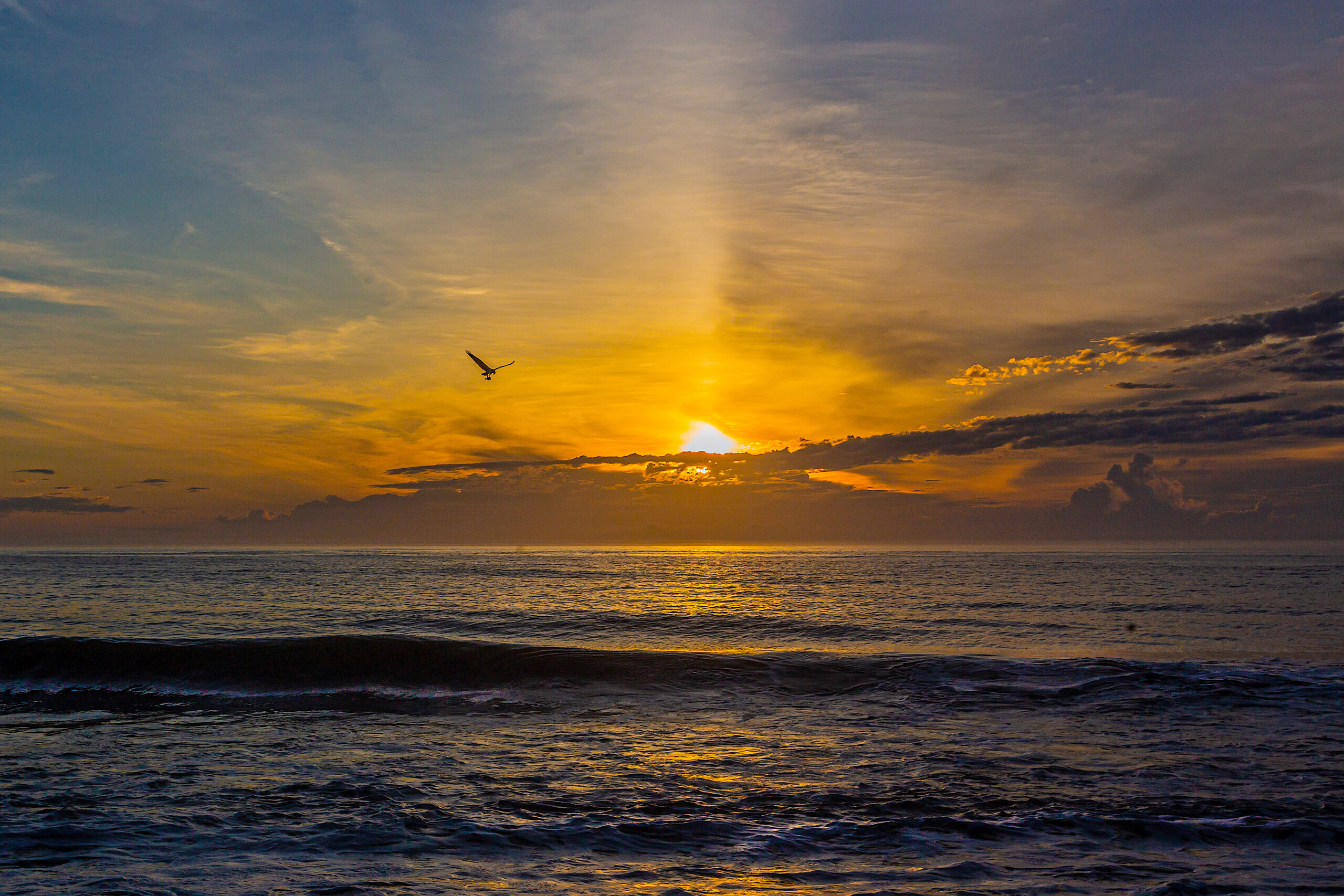
Swimming at Dawn
Before sunrise on warm summer mornings at Kitty Hawk, my father would awaken my first cousin Johnny and me, both of us not yet six, by shaking our feet, and we would come to quickly, put on our swimming trunks, and then follow him through the dunes, dew still on the sea oats and pennyworts, down to the tide line of the Atlantic Ocean.
Sometimes the glow from way out beyond the Gulf Stream clouds would be a deep red, other mornings it might be a faint yellow, with a promising fair-weather pink on the high clouds, nothing yet but the color of ash on the lower pus closer to the sea. We would stand silently, just we three, for a few moments, till my father, a former Navy navigator, spoke in the voice of command, saying briskly, “All right, let’s go!”
And in we went, over the sea-foam and into the surf after him, the plunge always shocking, as our warm bodies hit the frigid waters that had come all the way down to our cottage doorsteps from Labrador. Yet we knew by now what to expect, and to be immersed in those waters and in that moment with him were pieces of an incalculable joy. My father would have already swum twenty yards out and back by the time we got in up to our necks, and then he would pick us up, each in turn, pull us out of the water and toss us, and we would all three splash about a bit till he turned and pointed east and said, “Here it comes.”
So advised, we all kept a keen eye on the horizon till the first arc of red glow cut through and laid daylight abroad out over the ocean, and before we knew it the full sun sat itself right up on the eastern edge and fired the sky. Never on these bracing mornings were we out for more than twenty or thirty minutes, yet we knew how pure and how purely important it all was, for no one else was ever up and about.
The sea was ours, and we were the sea’s, and soon, after my father got us in to shore and, leaving us there, returned alone to the water, he swam forty or fifty yards out and then kept swimming, parallel to the beach, the quarter mile up to the old fishing pier and back, and we went back up on the porch, found towels and dried off, and stood watching his progress, wondering and marveling over what strength it must take to do that, to be a man swimming powerfully in the sea, and dreaming of a year to come when we might do that too.
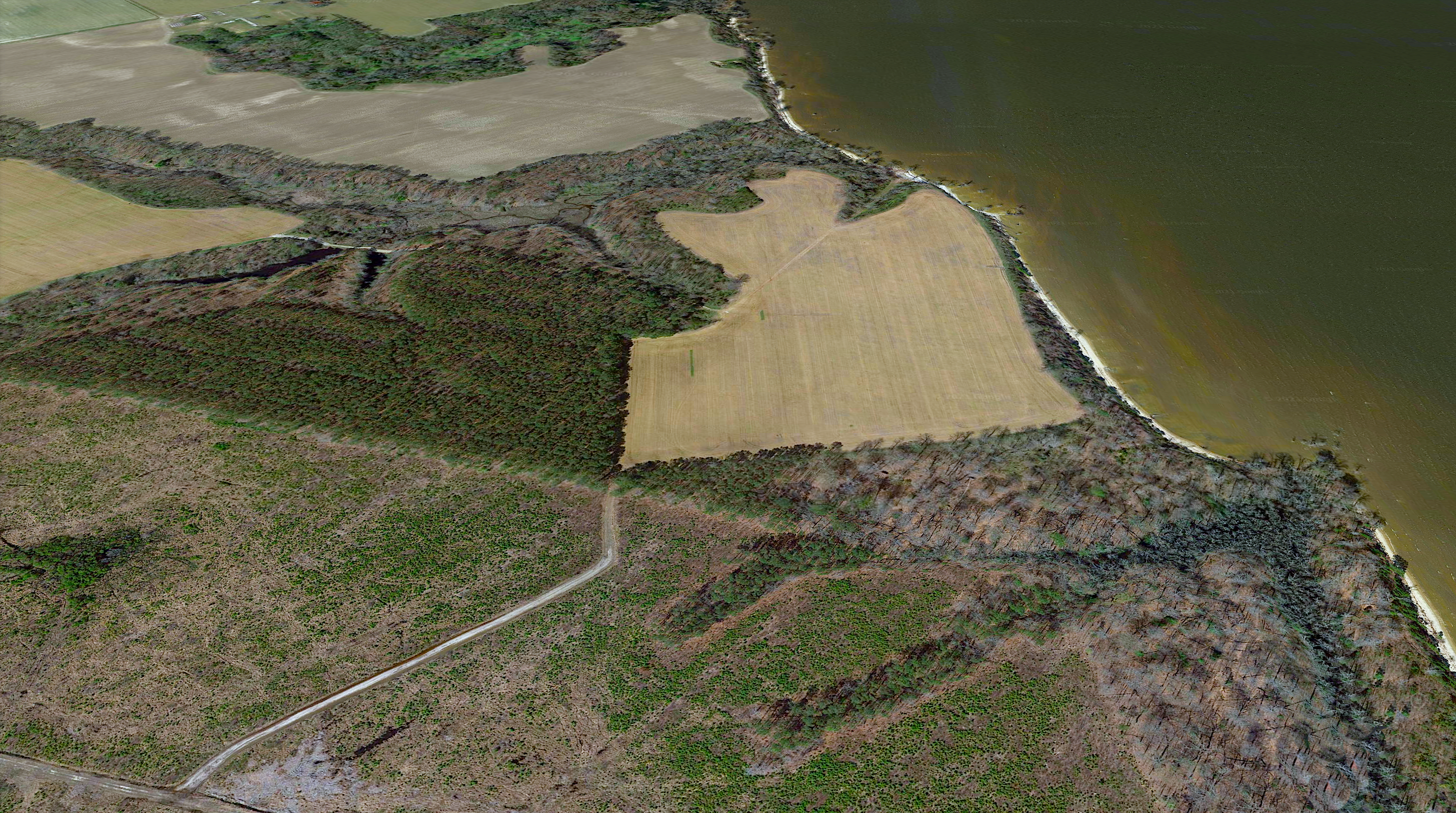
Beautiful Bertie
Many years later, at the dedication of the North Carolina Coastal Land Trust’s 1,000-acre Salmon Creek gift to the people of North Carolina, I sat near the Town of Windsor’s Mayor James Hoggard and next to County Commissioner Ron Wesson, just 100 yards or so from the cypress-lined mouth of Salmon Creek into Albemarle Sound. In light-gray sweater and black slacks, my wife Ann as president stood and spoke happily as she presented the deed to this magical tract to North Carolina State Parks: “Now that much of Salmon Creek becomes a State of North Carolina natural area, we may forever find ways to connect people from all over the state, nation, and world — and especially people from right here in Bertie County and the surrounding area — with this precious landscape and with these precious waters.”
Magical? A fair call, in terms of the confluence of cultures that has happened here: A former Indian village, Mettaquem, sat in this place; Lost Colonists, some if not all, may have sought shelter here after abandoning Roanoke Island in the late 1580s, and archaeologists led by the First Colony Foundation are literally digging into that matter; and Nathaniel Batts lived in his trading post here in the mid-1600s (a “rude and desperate man,” proselytical Quaker George Fox called him). Two centuries afterward, a massive Capehart family herring fishery anchored itself hereabouts.
Just a short way up the shoreline from Salmon Creek lay Bertie County’s nearly brand-new beach, nicknamed “Tall Glass of Water,” and Ron Wesson — who as the African American chair of the Bertie County Commission had signed the deed for it — spoke to me later with real pride and emotion about this first ever public swimming access in Bertie for all people.
He himself (a Dun and Bradstreet executive who worked all over the world before retiring back home) had not been able to learn to swim here in his own then segregated home county, so his mother, a schoolteacher for forty-two years, had driven Ron and his cousins over to Rocky Mount to kin and to the Tar River every weekend till the boys did learn. When the county held the May 2019 grand opening of this Bertie beach, featuring food, games, and swimming, Ron recalled 900 people showing up and one scene in particular: “This touches my heart — one little lad was in the water and he says, ‘Commissioner, thank you for letting us come to play at your beach!’ and I said, ‘This is your beach, and as you grow up, you have to take care of it!’”
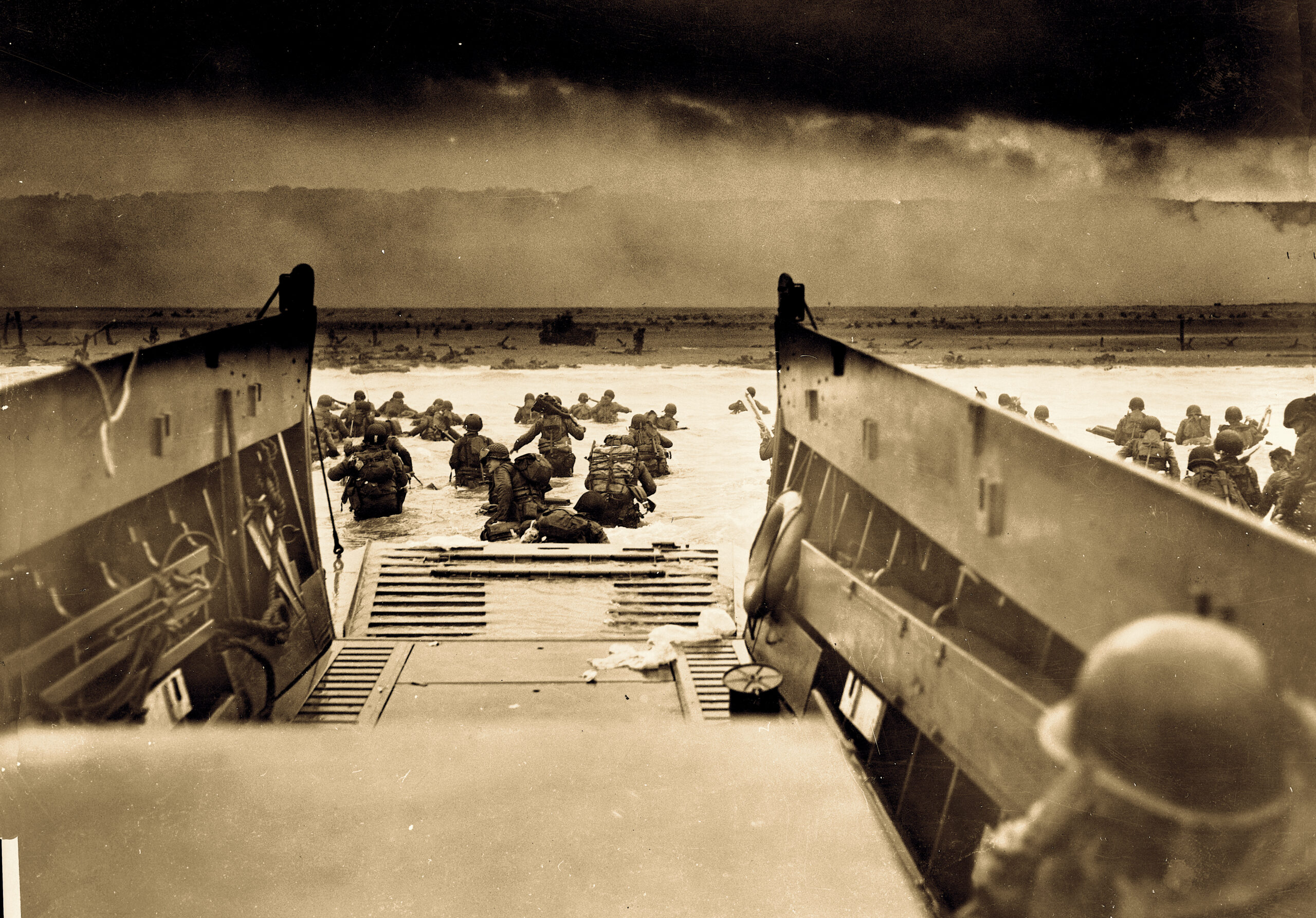
Harkers Islander
In one man’s life, the heartiness, the fearlessness, and the confident self-reliance of Harkers Island’s people could clearly be seen. Exploring North Carolina host Tom Earnhardt, who had a cottage on the island’s southeast shore for over forty years, from which he could boat down the Drain to Lookout Bight and fish for red drum and false albacore alike, has told me much about his across-the-street neighbor Donald Willis, an American hero then and now.
Once when Donald was a boy of only nine, his mother woke him in the middle of the night. She was one of the island’s midwives, and she said urgently: “Mrs. —— is going to lose her baby and she might die herself — you’ve got to go to Beaufort and get the doctor.”
Back then, with no bridge to the mainland, water was the only way. So Donald went down to the dock, midisland, south shore, to the family’s small sailing skiff — “First, I had to break the ice off the sail,” he recalled for Tom — and sailed west across the mouth of North River in the dark.
Up Taylor’s Creek he sailed on, to Beaufort Fisheries, where he docked. When he rang the bell on the waterside dock, the night watchman soon appeared, a .38 pistol on his hip. “What’re you doing here?” asked the watchman, who then heard Donald’s story, the need of the woman back on Harkers Island. They went inside, and the watchman wound the crank on the wall and then started talking on the first telephone Donald had ever laid eyes on.
“The doctor’ll be here soon,” the watchman hung up and said.
Presently here came the doctor, wearing a long overcoat, with his bag. He walked down to the fish house dock with the nine-year-old sailor and said to Donald, “Where are we going?”
“Harkers Island,” said the boy.
The doctor climbed into the sailing skiff, asking nothing more.
All the way back, all in the dark.
The mother in labor lived.
“Plenty of light,” Donald would recall. “You had the stars — any boy on Harkers Island could’ve done it.”
Donald Willis made his maritime career in the U.S. Coast Guard.
One day during World War II the chief called his men together and asked them, “Who knows how to fish? Net fish?”
And Donald raised his hand.
“OK,” said the chief. “You’re a deafmute, and you’re going to France.”
In France, Donald Willis worked with the French Resistance, indeed feigning as a deaf-mute on fishing boats off the French coast in the face of Nazi patrols, taking soundings with a lead line, triangulating with church steeples, making faint pencil notes on the blade of an oar, and then, when pulling up alongside another fishing boat, holding that oar out and using it to get in close, effectively handing that oar to one of its men, who would file with the Resistance this crucial look-of-shore from-sea information, Donald getting an imperceptibly different oar in return, one with its blade sanded — a clean slate, as it were — ready for more key nautical inscriptions.
This was March 1944, before D-Day that June.
When June 6 came, Donald Willis piloted a landing craft, which, after putting one company of soldiers on the Normandy shore, as he turned back for his ship, took cannon fire astern, leaving the boat dead in the water. He spotted, nearby, a Higgins craft with its pilot shot dead and fallen over the wheel, so he swam to that craft, set the dead mariner down upon the deck, and piloted on back to his ship and began taking more soldiers ashore.
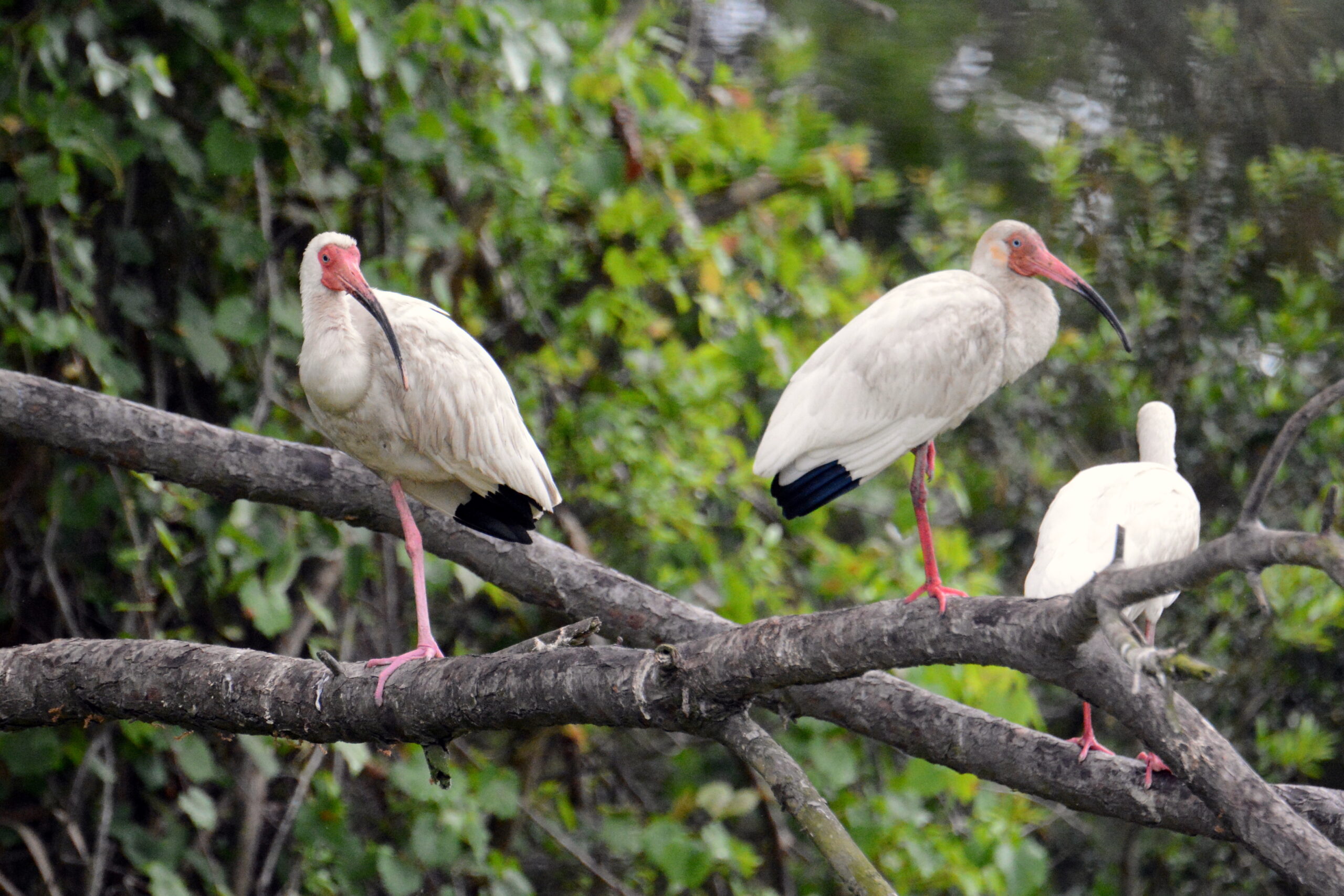
Rookery
One July evening along about seven thirty, our great friends Belinda and Michael McFee, Ann, and I were all sitting in a seventeen-foot bateau, anchored in four feet of water, high tide in a 100-foot-wide channel curving through the middle of a great marsh near Beaufort, the ceiling broken with gray and black clouds, a few shafts of sunlight now and again falling in the distance. The light kept shifting as the broad, gray clouds moved over us, dropping down and at one point shining up the distant semiglobes and cranes of the state port with cool sunlight. Everywhere, the endless light-green marsh grass stood out brilliantly in the gloaming.
We had been brought to this extraordinary spot at dusk by an equally extraordinary person, award-winning Smyrna biologist-teacher Miriam Sutton, a native Kinstonian whose family had had a cottage on the Neuse River’s Minnesott Beach when she and her longtimefishing-partner brother were growing up: “That’s where we learned fishing, boating, all that mess!”
Miriam — a very fit, ever-smiling, sandy-haired recent retiree — had once taught in Asheville for a spell, saying of that time, “I said I needed an ocean up there. Gave ’em eight years, that was long enough.” She moved back east in the mid-1990s, got a kayak as soon as she returned, and “started exploring — that’s what I came back for!” By now, she has been floating these waters in small craft for nearly twenty-five years — a thoroughly skillful boater, she put out a second anchor when a breeze started to push us around, keeping us oriented to the northeast, our eyes on the prize.
To wit: a hammock, an oblong live-oak-and-myrtle islet perhaps 100 yards long and 20 to 25 feet high, a small significant spot in great marshes we have gone around one side or the other for many years, yet never gone in. The hammock lay there, an intense deep green, with the broader light green of the marsh grasses stretching out around it forever.
Yet the hammock was getting whiter by the moment, for this was a serious rookery, and more birds kept streaming in as the evening moved swiftly from twilight toward dusky dark and as storm clouds to our south lay rain out over the ocean. By fives, tens, fifteens came the white ibises, the mature birds with black wing tips, the immatures without, all as if led by their long thin downcurved bills right to this very place.
Egrets aplenty greeted them, a couple of big, brown immature night herons too, one great blue heron.
And one roseate spoonbill.
Rarity of rarities for North Carolina.
Soon afterward, David Cecelski told us that he almost always saw a dozen, maybe fifteen, ibises fishing back in Morton’s Millpond on the west side of upper Clubfoot Creek in Harlowe miles away. “When they’re done, they head o to the southeast — do you think they could be going to the rookery you saw? Or is that too far?”
Not too far at all. Walker Golder, the great colonial water-bird authority who helped establish Audubon’s sanctuary system in our many coastal waters, once tracked by plane mature ibises going from Battery Island to Southport all the way to Lake Waccamaw just to fish for their young back in those Cape Fear River nests, a flight distance of forty miles each way!
And here this night near Beaufort, just before the rain found us and sent us back into port, all the while the ibises kept on flying in, some just above the water, some suddenly lifting above it to five and even ten feet, Miriam observing this and saying wisely: “Because of us.”

Adapted from North Carolina: Land of Water, Land of Sky by Bland Simpson, photography by Ann Cary Simpson, Scott Taylor, and Tom Earnhardt. Copyright © 2021 by Bland Simpson. Used by permission of the publisher: www.uncpress.org.
- Categories:
